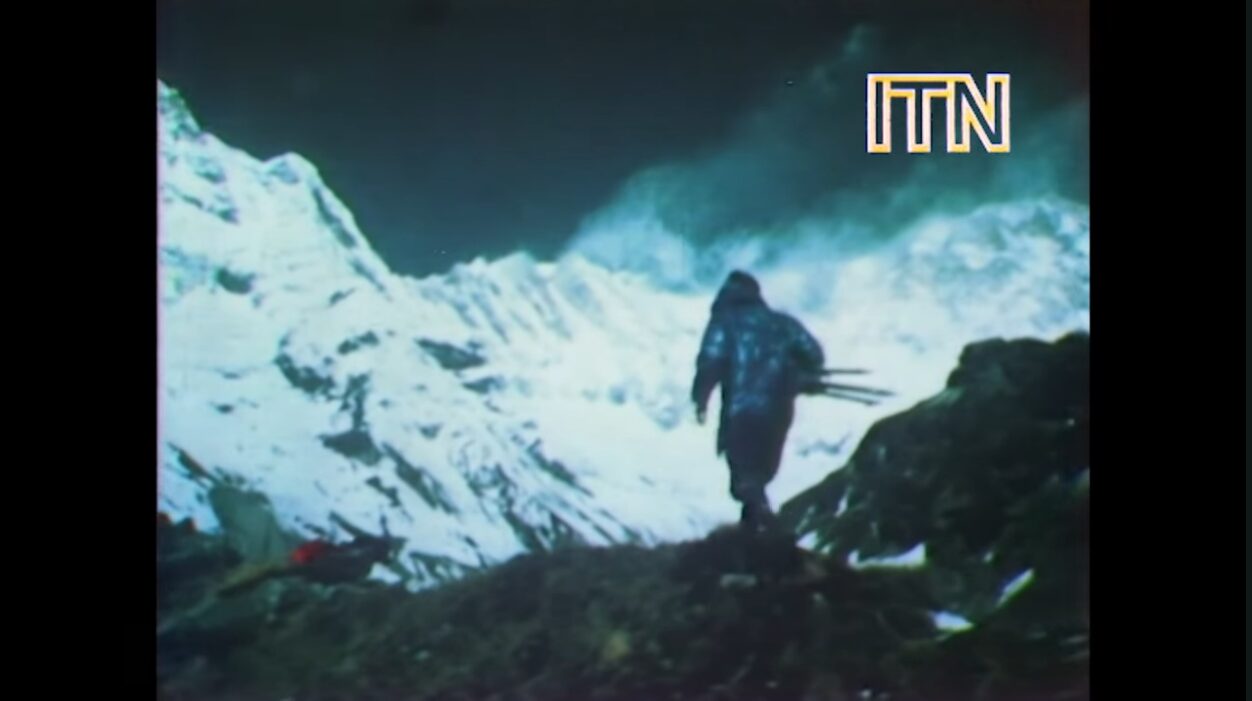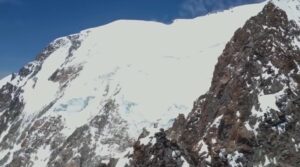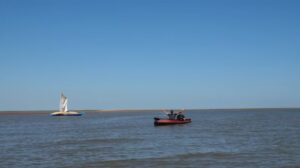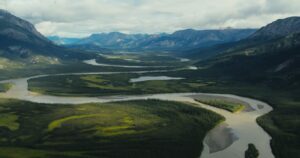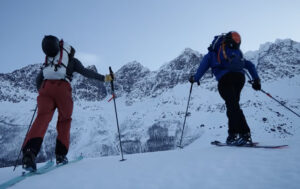Only weeks after the titular expedition returned, ITN broadcast Death on Annapurna: Chris Bonington’s Lethal Himalayan Expedition. Using footage from the expedition, it chronicled the British Annapurna South Face expedition of 1970.
Led by Chris Bonington, the expedition successfully summited Annapurna’s South Face for the first time. But on the descent, their luck turned.
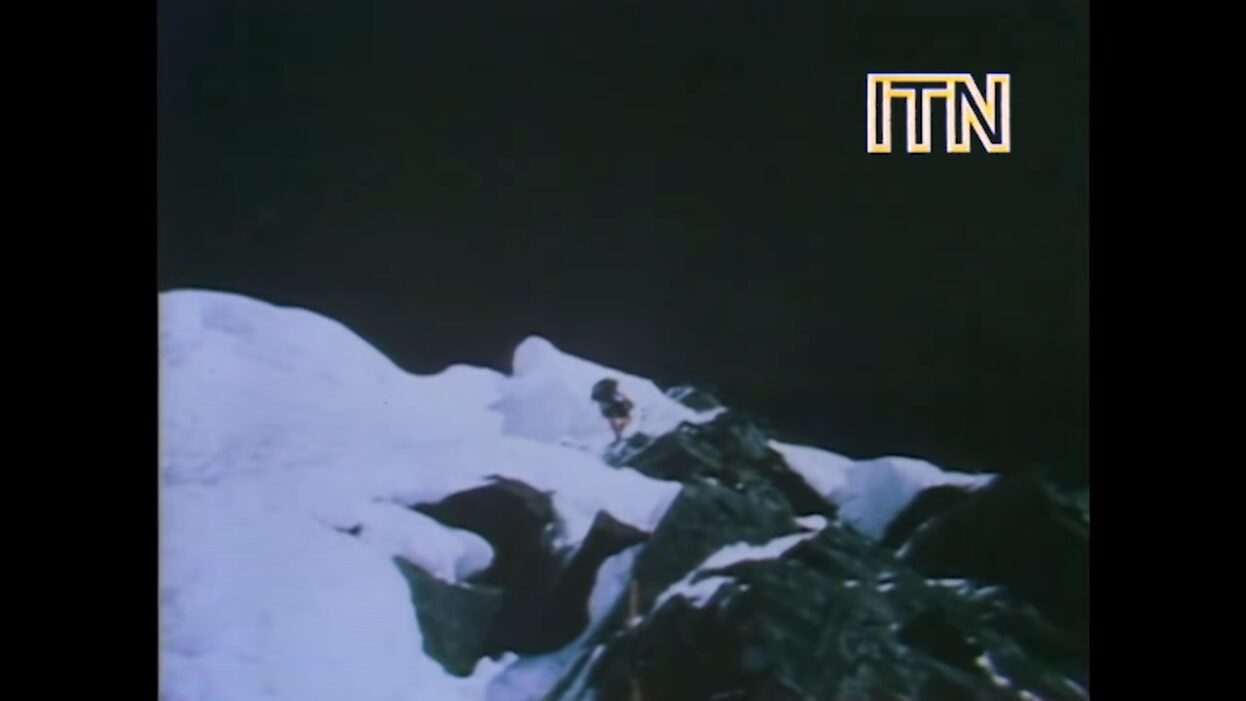
On the final push to the summit. Photo: Screenshot
Snow bad this year
The documentary begins with the porters, however. The expedition employed 320 local porters, who each made £3 total for their work. Days into their heavily laden march, Chris Bonington is introduced. He’s received bad news. The snow was quite bad this year and lays thick and low over the mountain. This means a much lower base camp and a harder push ferrying their goods back and forth.
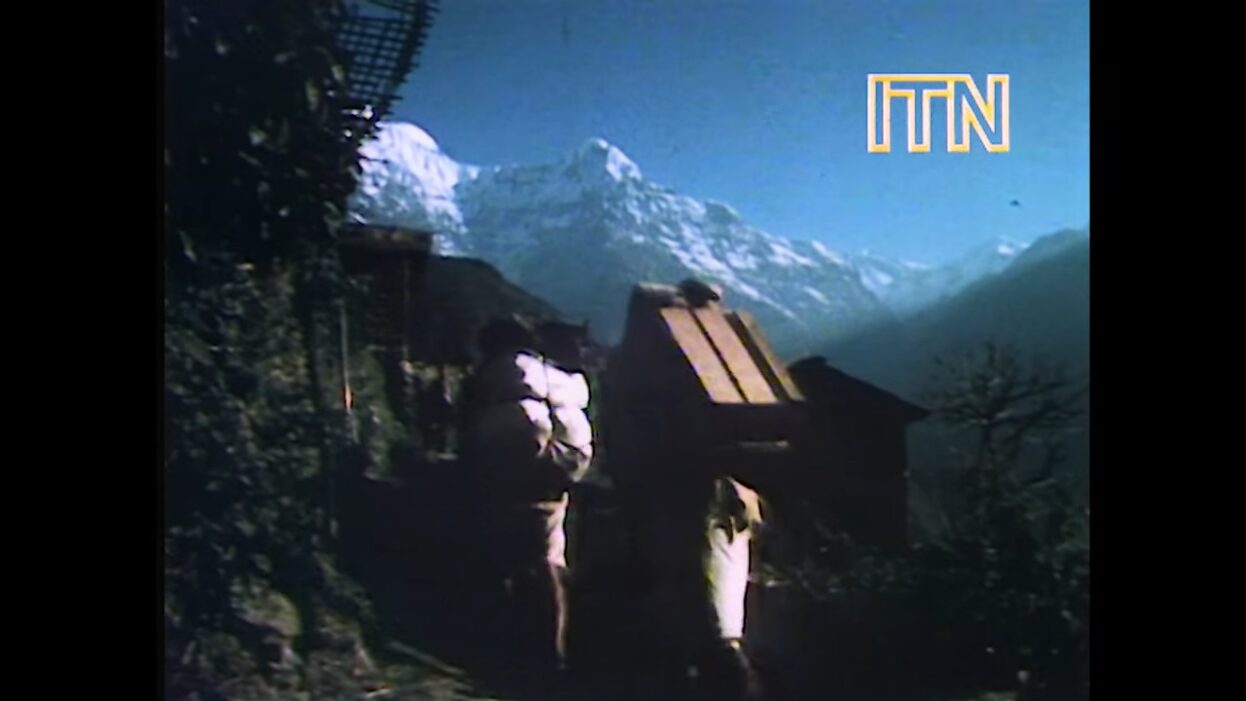
This was the largest British mountaineering force since the 1953 Everest expedition. Photo: Screenshot
At 3,600m, the porters can finally abandon their loads. As accompanying presenter John Edwards notes, the South Face isn’t clearly visible from the camp. The camp’s distance from the face causes continuing supply line issues. Then a sudden blizzard forces the porters to abandon a load of supplies, which are promptly raided by local ravens.
“Big mountains are unpredictable,” Edwards notes simply. At any moment, the weather, the altitude, and the ice can end the expedition. Under Bonington, the expeditionaries slowly work their way up the face, getting ropes in place and negotiating a mountainside that’s never been climbed before.
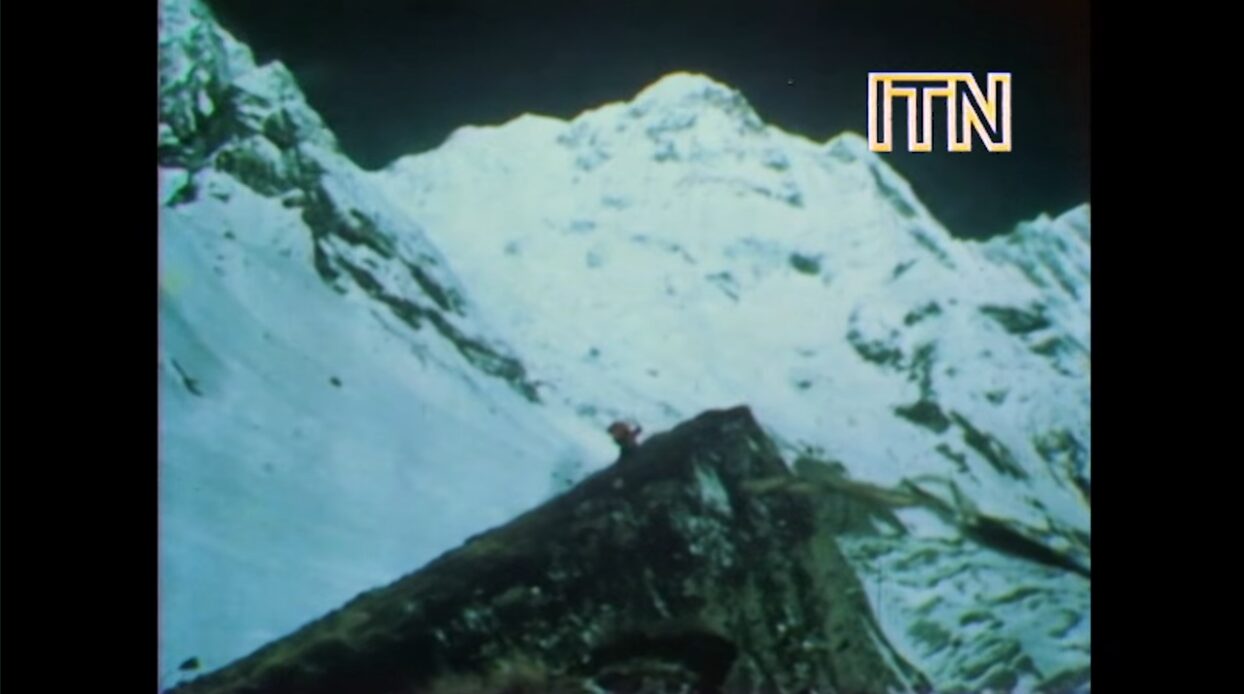
Edwards has to hike for five kilometers from Base Camp to get a clear view of the South Face. Photo: Screenshot
To the summit
The team steals upward, throwing themselves against an intimidating icefall, which is increasingly unstable as melting ice and snow cause avalanches and falling seracs. The monsoon season, which will end all climbing, swiftly approaches.
It takes 21 days to climb the ice ridge. Now, with three weeks remaining, they face the rock band. Frustrated with the slow progress, Bonington tries to keep climbers on the mountain. But rest is impossible above 6,000m.
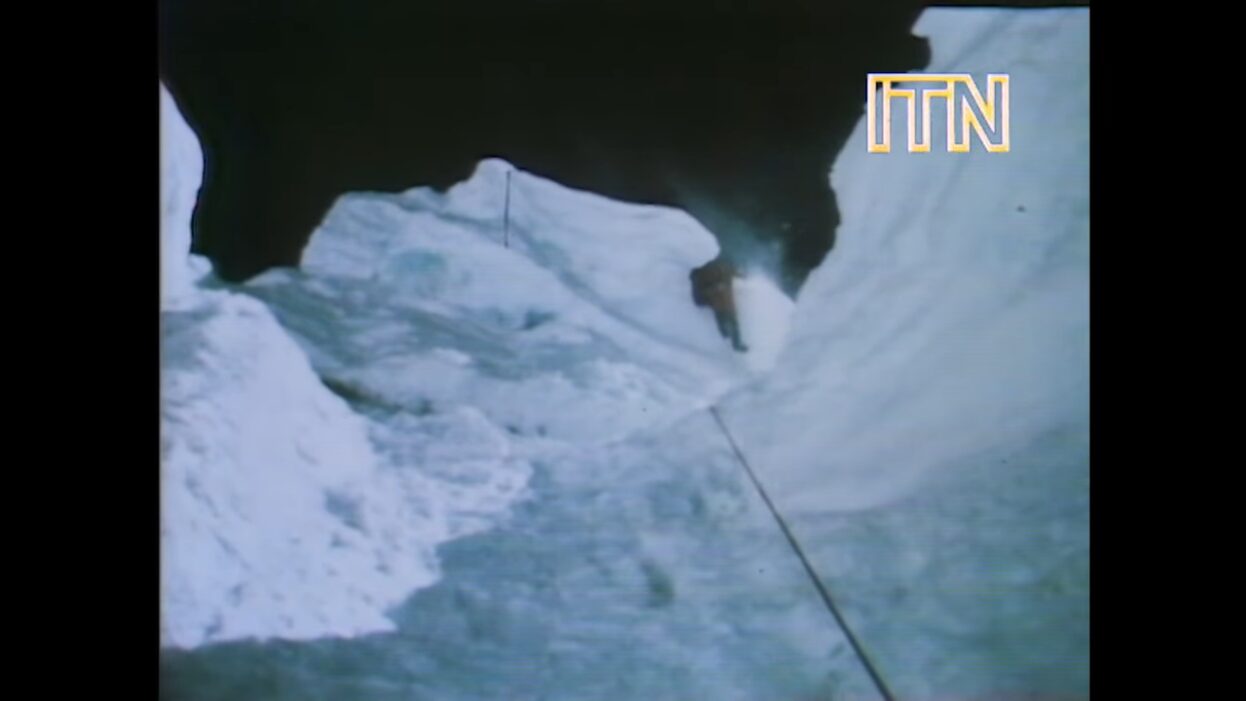
A nearly vertical section of the climb. Photo: Screenshot
As Bonington explains, the work is unlike the “traditional Himalayan plod,” with exhausting, very steep climbing and soft snow which must be shoveled through. The sheer face means Sherpas do not accompany them above 6,400m; in that era, few Sherpas had technical climbing skills. Forced to do their own carrying, the climbers are increasingly exhausted and sick. Bonington himself, pleurisy-stricken, has to fall back to Base Camp.
Short of time and fearing changeable weather, Bonington decides to continue the push. Don Whillans and Dougal Haston, especially, are game for the challenge. It is these two who ultimately reach the summit, as those waiting below cheer for them over the radio. They were actually only supposed to set up Camp 7, but as they explain over the radio, “It was easier to go for the summit than it was to pitch the tent.”
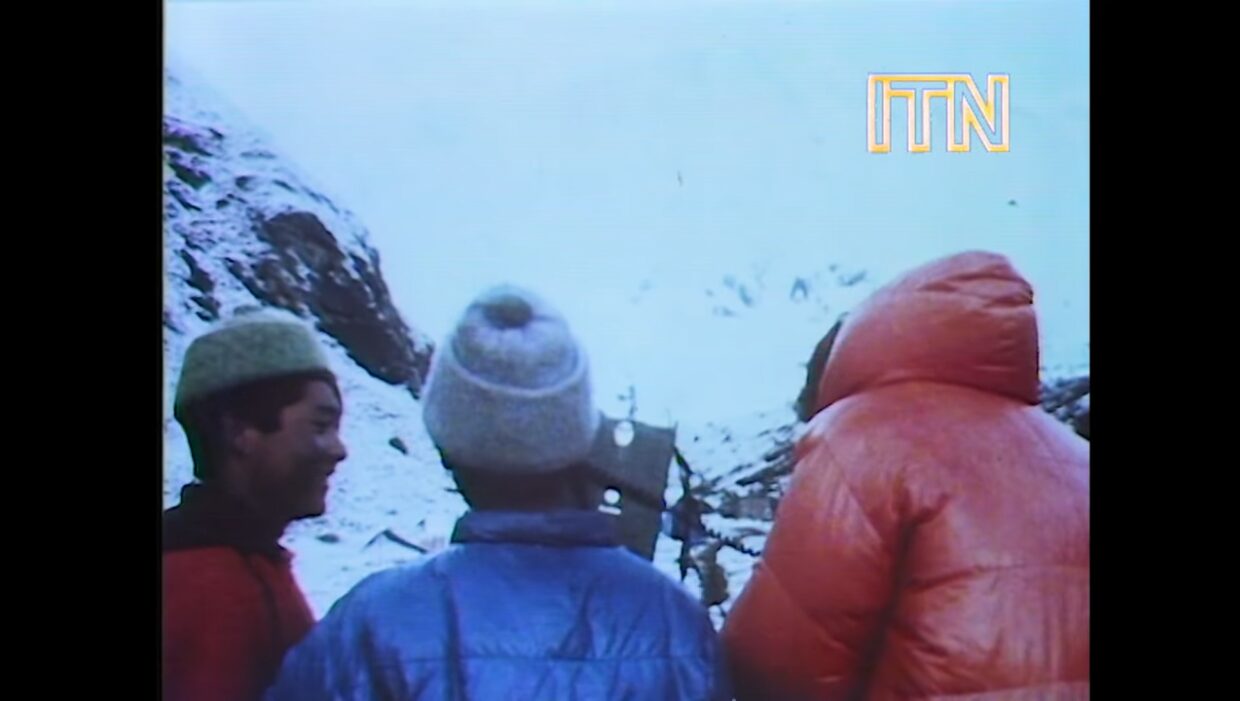
Gathered around the radio at Base Camp. When they began their push, Whillans and Haston were already out of food and supplemental oxygen. Photo: Screenshot
A tragic descent
With that sudden and almost anticlimactic victory, it’s time to descend. They’ve summited just in time, as the weather begins to turn while they celebrate. Then, another sudden shift.
Most of the men and supplies were already at Base Camp when Ian Clough, a climbing instructor and friend of Bonington, was bringing down a last load of equipment. Only three hours from Base Camp, Clough lost his life in the icefall to a falling serac.
Due to the logistical difficulties of retrieving his body, Clough is buried at Base Camp. We see the expedition gathered around his grave, as Bonington says a few words. Perhaps, Edwards reflects, this grave halfway up a frozen mountain is “the most suitable burial place for a mountaineer.”
Rather than leave us with this quiet combination of grief and triumph, the documentary ends on a strange coda: Edwards interviewing Don Whillans about his alleged Yeti sighting. As Edwards repeats throughout the documentary, you never can tell in the Himalaya.
